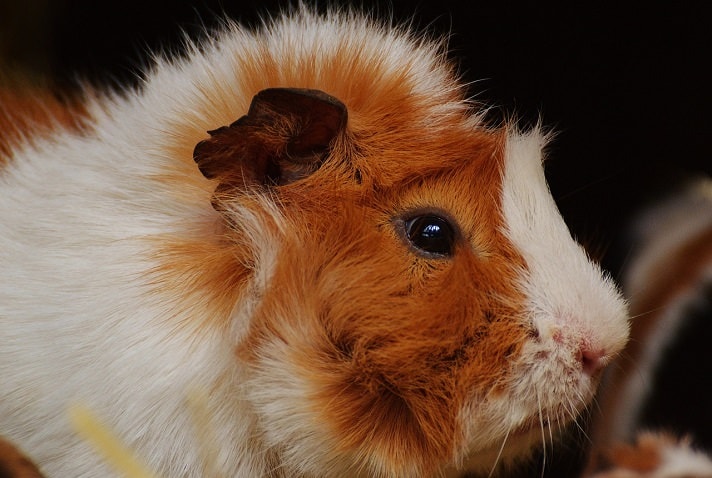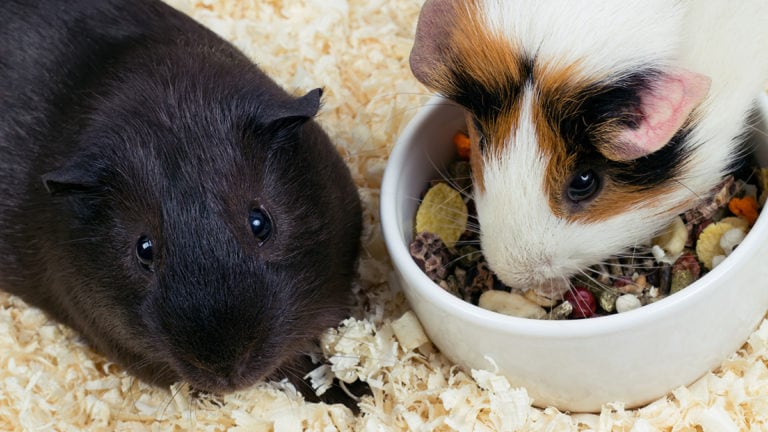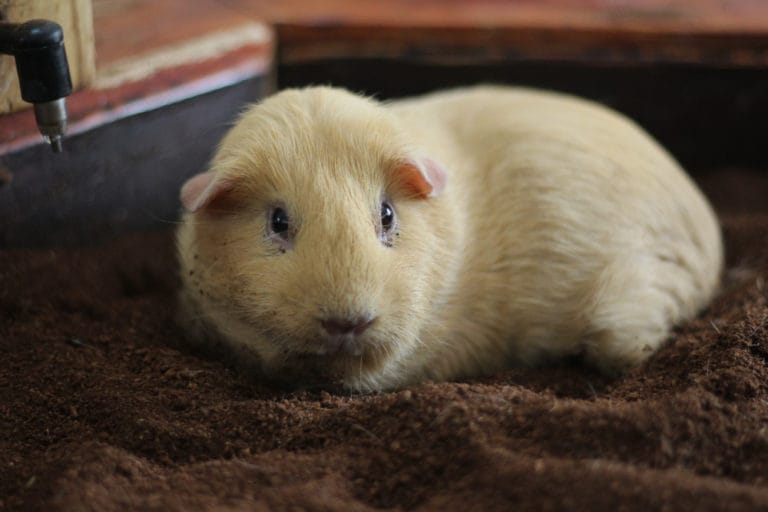Q.
We have two American guinea pigs named Cinnamon and Canny. Both are females about 2 1/2 yrs old. They seem very happy and healthy and eat a varied diet. They love to jog around their cage and get to go outside a couple of times a week for some supervised grass nibbling and fresh air. Canny has always had bad dandruff and nothing we have tried has gotten rid of it. I have heard and read that dandruff isn’t a big deal, but Cinnamon has a little dandruff and Canny has a lot. We bathe them about every three months in a mild shampoo made for guinea pigs and use conditioner for guinea pigs. Do you have any suggestions? I did try neem oil once.
A.
Typically, there is very little you need to do to keep your guinea pig’s skin and haircoat healthy. Guinea pigs (those with hair!) have a beautiful coat that is maintenance-free, at least for an owner. You should not have to bathe or clean your guinea pig’s coat unless your guinea pig gets into some unusually dirty area or is sick and cannot clean itself well.
When a guinea pig has “dandruff,” this constitutes a medical condition. Dandruff refers to a specific skin condition, but it may be that your guinea pig has one or more reasons for debris on the skin that appears to flake off. If your guinea pigs are on a good guinea pig food with enough added vitamin C, it is unlikely diet is the cause of the skin condition. If the housing is clean with proper humidity and bedding, then husbandry is unlikely the cause of this problem. The most common reason for seeing debris on an otherwise healthy guinea is external parasites. These are common, even to the best-kept guinea pigs, and parasites are easily spread from guinea pig to guinea pig.
Parasites may cause very mild disease (like debris on the skin) to much more severe lesions, such as open sores on the skin, severe itching and even seizures. To treat parasites, your veterinarian will prescribe two to three treatments of a topical, injectable or oral medication. The other extremely important aspect of treatment is to clean and remove parasites and their eggs from the cage and any areas of the house where the guinea pigs have been.
Diagnosis of the problem is usually very simple. Your veterinarian will look at the debris and some hair under the microscope to determine if parasites or their eggs are present. If no parasites are seen and if treatment does not improve the condition, the next step may be a small biopsy of the skin and hair follicles to determine if another disease process is present.
By: Karen Rosenthal, DVM, MS
Feature Image: Alexas_Fotos/Pixabay
Share:









